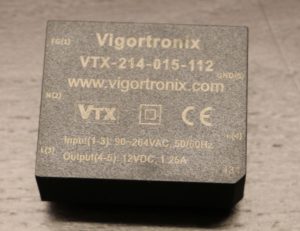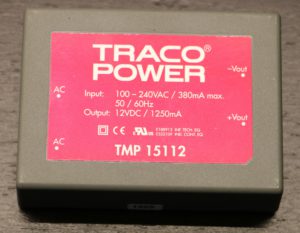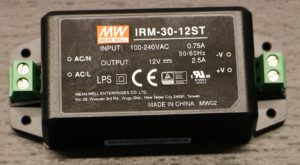One of the most challenging aspects, when designing a new electronics product, is the AC-DC converter selection.
Why is that a challenge?
- AC-DC converters are exposed to the hostile mains. The converter might get hit by lightning strikes, voltage fluctuations or the back EMF of a motor.
- AC-DC converters provide the protection between the user and the mains. Therefore choosing a proper converter can be a matter of life and death.
- AC-DC converters can be a source of unwanted EM radiation.
- AC-DC converters can be the major factor, that is limiting the life of your product or the usable temperature range.
Many circuit designers are aware of all the problem, that can come with selecting the wrong AC-DC converters. As a consequence pre-built converter bricks become more and more popular. As an engineering company we have been facing this challenge multiple times in the past and struggle with it more often, than we want to admit.
How hard can it be?
In theory selecting a AC-DC converter is as easy as browsing to your favorite distributors webshop, entering the desired output voltage and current and ordering the module. In practice it is a little more difficult though.
- How many outputs do you need?
- Do you need a supply that can operate at 120V or at 230V or both?
- What safety ratings/isolation voltage do you need?
- Do you have any requirements for ripple and noise?
- How much is it supposed to cost?
Meet the competitors
We found ourselves in the situation of needing AC-DC converter with the following requirements:
- Universal (120V and 230V) input voltage
- 12V output
- at least 15W
- EN60950 Cat II, Class II
This means, that primary side input will need to be capable of handling 2500V pulses isolation barrier between mains and low voltage side will need to survive at least 4000V - No requirements for ripple and noise
- Pricing < 10€@1000pcs
A quick search at our main distributors left us with a two choices, that fit our requirements:
- The Vigortronix VTX-214-015-11

- The Traco Power TMP15112

Where IT went wrong
When starting the design of the product, we had to decide whether we should use the Vigortronix, the Traco Power or look for a different supply. As we were unsure, we went with both. We planned to use the cheaper Vigortronix supply primarily and fall back to the reputable Traco Power converter.
We went ahead and built two prototypes, one with the Traco and one with the Vigortronix …
The first thing, that we noticed is that, although the Vigortronix converter was in theory much cheaper, it required several external components. According to the datasheet, the converter requires an external X-class capacitor as well as a quite expensive common mode choke. This drove up the BOM cost significantly. There goes the cost advantage of the Vigortronix module.
With the prototypes ready and tested, we went to our EMI lab and had a really hard time.
The Vigortronix supply failed the conducted EM test immediately.
The logical consequence was switching to the Traco prototype … and conducted EM was fine.
The next test was the radiated emission … and we failed.
Now we went into problem solving mode.
We adjusted filters modified capacitor values, and finally managed to make the Vigortronix supply pass the conducted and radiated EM limits.
Then the test with our product continued with the Vigortronix and everything looked good.
During the last test, a 2kV voltage spike (surge) was applied between primary and secondary side of the powersupply … and it died.
The result of 1500€ worth of test time in the lab was bitter.
The Traco didn’t meet the radiated emission standards and the Vigortronix failed the surge test.
Back to the drawing board
After talking to the guys at the EMI lab, we were pointed to a Taiwanese manufacturing called MeanWell.
We looked around for a suitable MeanWell supply and found the IRM-30-12, a 30W, 12V supply.

Learning from our previous mistakes, we did a clever thing and sent the AC-DC converter to the lab for pre-testing and received a promising report. Download report here (in German)
Radiated emissions of the IRM-30-12 were a bit high, but as we only wanted 15W out of the 30W supply, it was fine.
We built another prototype with the MeanWell supply and things started to look much better. Although we had to do some minor modifications, all tests we fine and we passed CE certification.
Why did we fail?
The major reason why we failed so horribly and spent several thousand euros for EMI testing was simple: We didn’t test our AC-DC converters prior to designing them in.
The Aftermath
After this fail we decided to do better and more comprehensive testing of potential power supplies.
We invested in a lot of equipment and wrote some automated test code.
The results of this test are pretty comprehensive reports, that we will share, so that you don’t fall in the same traps as we did.